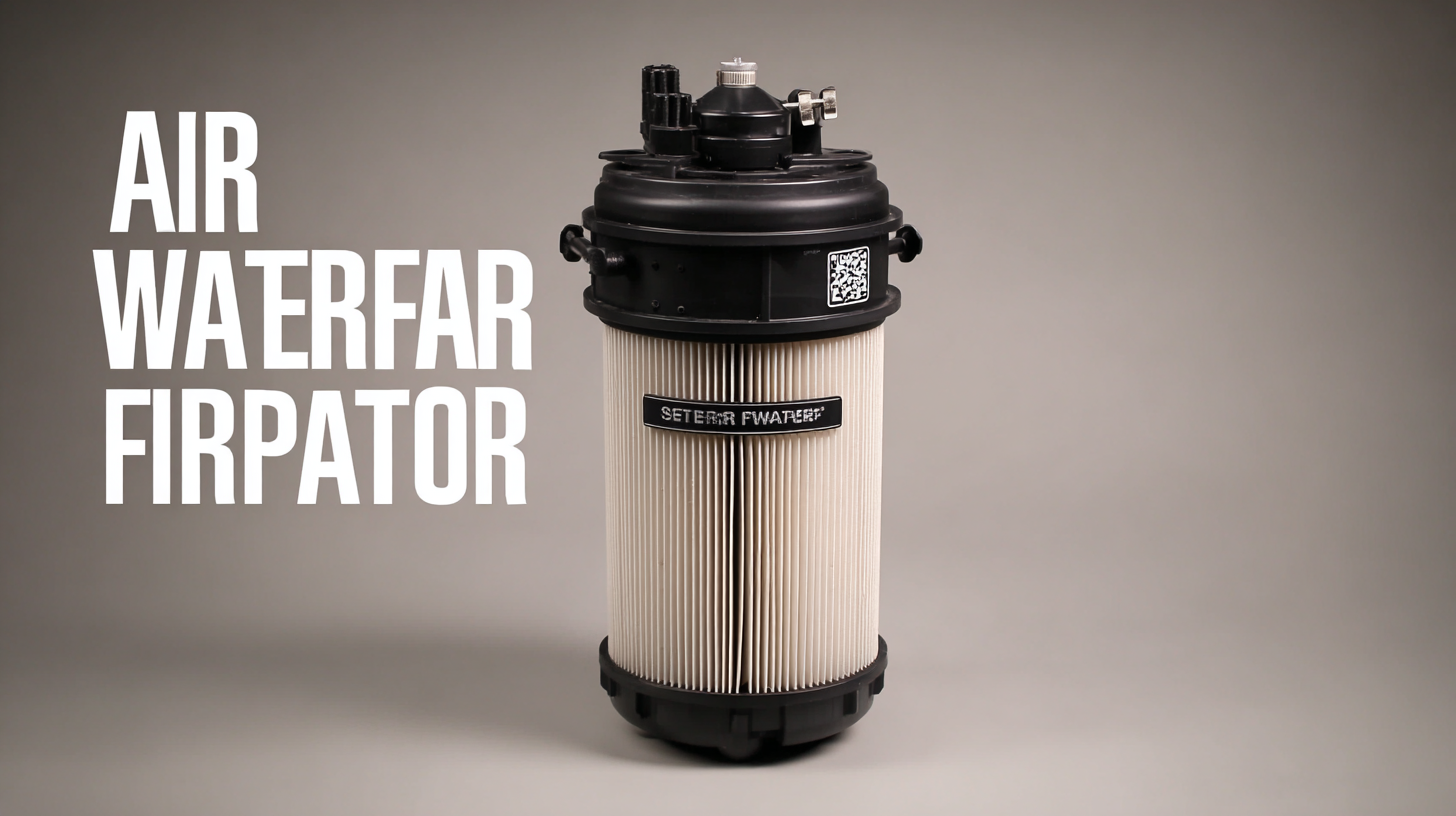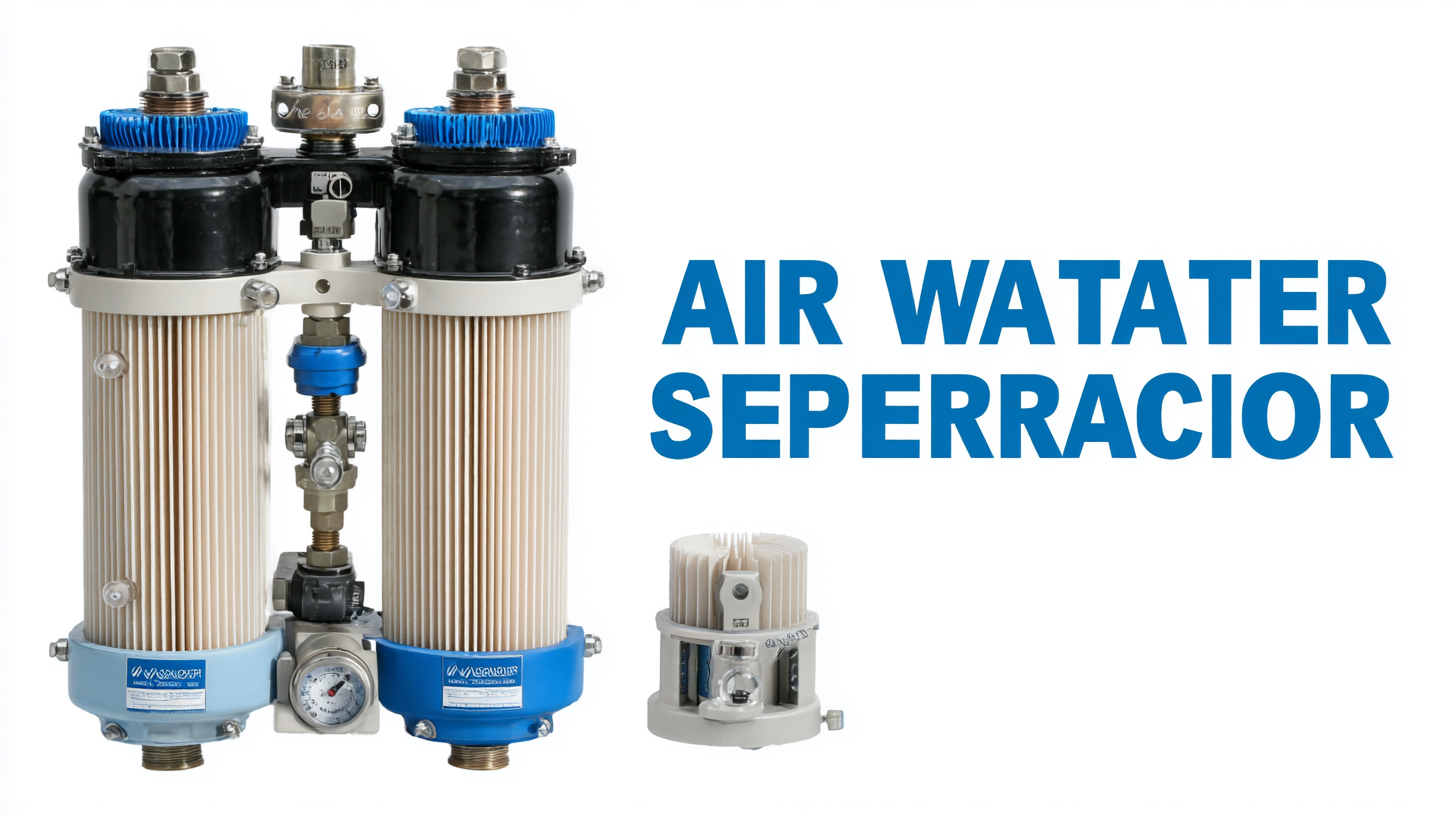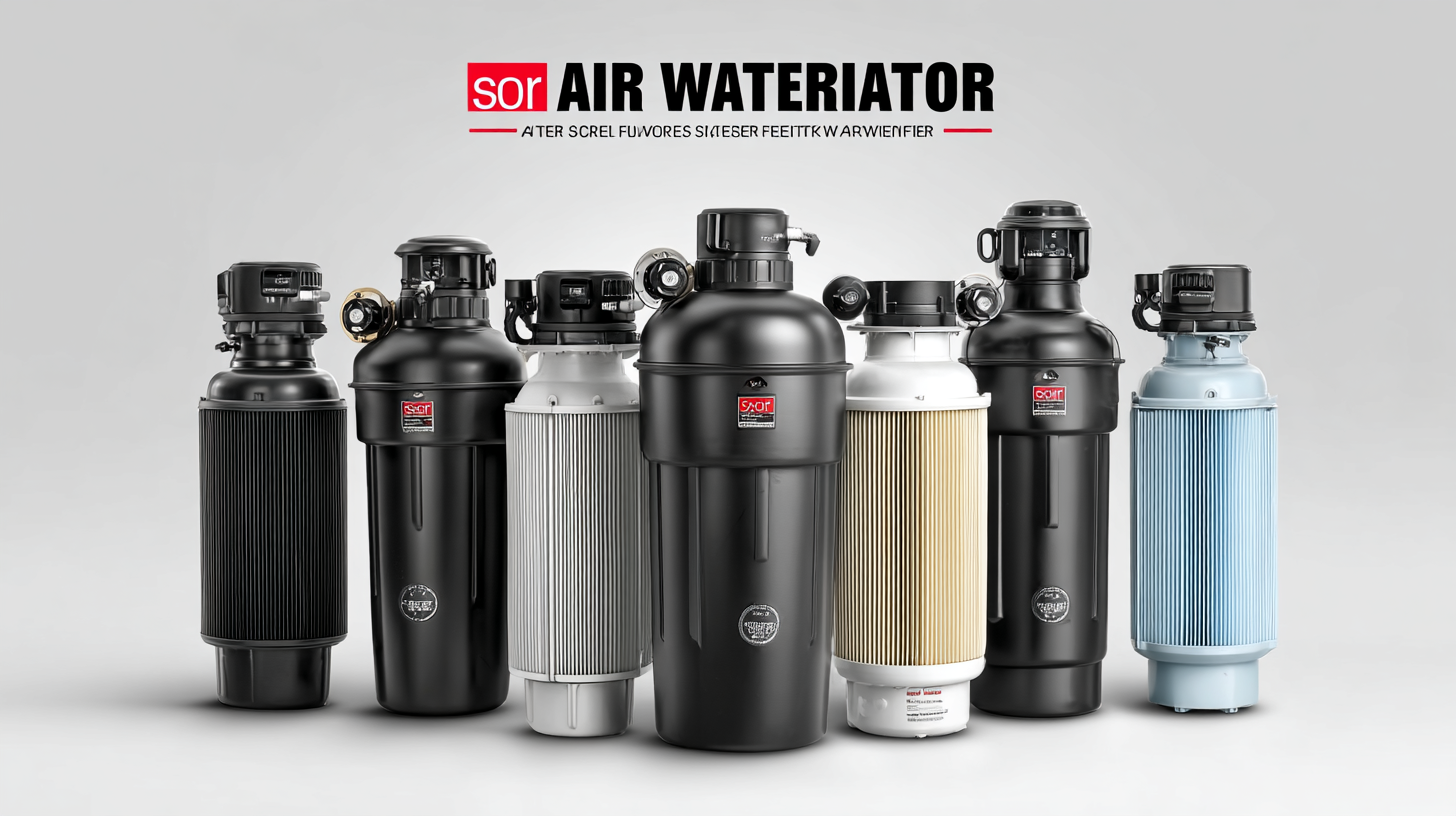
- sales@bjbod.com
- Mon - Sat at 7:00AM to 9:00PM

 In the quest for optimal performance in various industrial applications, the Air Water Separator Filter emerges as an essential device for ensuring the efficiency of operations. This innovative technology plays a pivotal role in removing moisture and particulate contaminants from compressed air systems, thereby safeguarding machinery and extending their lifespan. Understanding the technical secrets behind the best Air Water Separator Filter can significantly enhance its effectiveness, leading to improved productivity and reduced downtime. Throughout this comprehensive usage guide, we will delve into the benefits of various types of filters available in the market, exploring their unique features and applications. Whether you are a seasoned professional or a newcomer to the field, this guide aims to provide valuable insights into harnessing the full potential of Air Water Separator Filters, enabling you to make informed decisions that will elevate your operational performance.
In the quest for optimal performance in various industrial applications, the Air Water Separator Filter emerges as an essential device for ensuring the efficiency of operations. This innovative technology plays a pivotal role in removing moisture and particulate contaminants from compressed air systems, thereby safeguarding machinery and extending their lifespan. Understanding the technical secrets behind the best Air Water Separator Filter can significantly enhance its effectiveness, leading to improved productivity and reduced downtime. Throughout this comprehensive usage guide, we will delve into the benefits of various types of filters available in the market, exploring their unique features and applications. Whether you are a seasoned professional or a newcomer to the field, this guide aims to provide valuable insights into harnessing the full potential of Air Water Separator Filters, enabling you to make informed decisions that will elevate your operational performance.
The air water separator filter is a crucial component in various industrial applications, serving to efficiently remove moisture and contaminants from compressed air systems. Understanding its key components and functions is essential for optimizing performance and extending equipment lifespan. Typically, these filters are designed with elements such as coalescing filters, which cluster tiny water droplets into larger ones, making them easier to separate, and particulate filters that capture solid contaminants. According to the Compressed Air and Gas Institute (CAGI), utilizing a quality air water separator can reduce maintenance costs by 30% and improve overall system efficiency by up to 15%.

In addition to the primary functions of moisture removal, these filters play a significant role in protecting downstream equipment from damage, which can cost industries thousands of dollars in repairs. A report from the International Society of Automation indicates that air quality directly impacts the efficiency of pneumatic tools and processes, highlighting the importance of maintaining optimal air purity. By regularly inspecting and replacing air water separator filters, facilities can ensure compliance with industry standards, thereby enhancing operational reliability and minimizing downtime.
To effectively measure the efficiency and effectiveness of an air water separator filter, it's essential to evaluate several key performance metrics. First, focus on the separation efficiency. This metric is determined by the ability of the filter to remove moisture from the air stream. High-quality filters typically achieve a moisture separation rate of over 99%. Testing methods, such as using calibrated flow meters to assess the inlet and outlet moisture levels, can provide quantitative data on performance. Regular monitoring ensures that the filter operates within specified limits and maintains optimal functionality.

Another critical performance metric is pressure drop. This refers to the difference in air pressure before and after the filter. An increased pressure drop indicates potential clogging or inefficiency in the filtration process. To gauge this metric accurately, maintain a consistent airflow during testing conditions and record pressures at both ends of the separator. Additionally, understanding operational costs in relation to energy consumption helps in evaluating overall effectiveness. By combining these measurements, users can make informed decisions about filter selection and maintenance, ultimately enhancing their systems' performance and longevity.
When it comes to installing an air water separator, attention to detail is critical for ensuring optimal performance. The first step in the installation process is selecting the right location. Ideally, the unit should be positioned in a space that allows for easy access and maintenance, while also ensuring it is free from excess vibrations or extreme temperatures. Proper leveling is crucial to avoid any operational issues, so a sturdy base is essential. It's advisable to consult the manufacturer’s guidelines for specific installation requirements, which can vary depending on the model.
Once the location is determined, the next best practice is to carefully connect the inlet and outlet pipes. When doing so, it's important to use high-quality fittings that will withstand the pressure and prevent leaks. Utilize thread sealants on pipe threads to enhance the seal and ensure a tight fit. After the installation is completed, conducting a thorough inspection for any potential leaks or installation flaws is vital. Lastly, consider implementing regular maintenance checks and cleaning schedules to prolong the life of the separator and maintain its efficiency, ensuring that it continues to perform at its best in separating air and water.
Proper maintenance is crucial for the longevity of air water separator filters, as neglect can lead to common issues such as reduced efficiency and increased risk of failure. Predictive maintenance, driven by real-time data from IoT sensors, allows for proactive measures that not only reduce downtime but also cut down operational costs. According to industry reports, implementing such predictive strategies can extend equipment lifespan significantly, optimizing performance while minimizing the likelihood of unexpected breakdowns.
Moreover, understanding the intricacies of maintenance is essential. Common problems with air water separator filters often stem from accumulation of debris or inconsistent usage patterns. Regular service and maintenance help ensure that these devices operate at peak capacity. Surveys have shown that companies that prioritize a comprehensive maintenance approach report up to 30% longer asset lifespans. Furthermore, enhanced service practices are linked to better overall performance, ensuring that these critical filtration systems continue to function effectively in various environments. By fostering a commitment to maintenance, users can achieve greater satisfaction and reliability in their air water separation solutions.
The air water separator filter technology is on the brink of significant innovation, driven by the increasing need for efficient water management and air quality control. According to a recent market analysis by Research and Markets, the global air water separator market is expected to grow at a CAGR of 8.5% from 2023 to 2030. This growth is fueled by advancements in materials and design that enhance the efficiency of these systems, particularly in industrial applications where air moisture can lead to operational inefficiencies.
Emerging trends such as the integration of IoT sensors and AI-driven analytics are paving the way for smarter air water separator systems. These innovations not only optimize performance but also allow for real-time monitoring and predictive maintenance, reducing downtime and operational costs. A report from MarketsandMarkets highlights that the adoption of smart technologies in air water separators could cut maintenance costs by up to 25% while improving reliability. As companies increasingly prioritize sustainability, enhanced technology in air water separation is likely to play a crucial role in minimizing water wastage and improving overall resource management across various sectors.